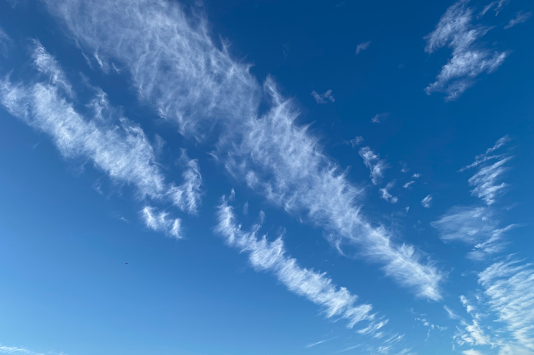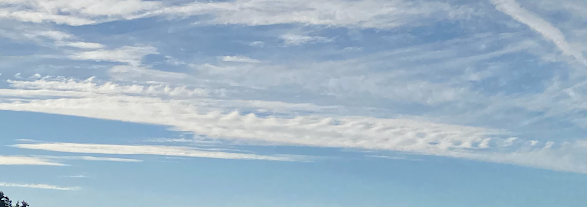The media is going hyperbolic about heat waves, claiming that global warming/climate change caused by human CO2 emissions is producing a huge, sudden uptick in massive heat events. The greatest in the historical record. Heatwaves are all over the planet! Phoenix, Arizona is a frequently noted poster child of the new heatwave regime.
Here are a few examples of the headlines, I could provide dozens more just like it.
The Quiz
Before I discuss the situation, let me provide two possibilities for you to consider.
(1) Human emissions of greenhouse gases, such as CO2, are slowly warming the planet. During the past century the Earth has warmed by roughly 1°C and human emissions could have contributed much (but not all) to the warming. El Nino periods contribute to temporary warming, and local warming due to urbanization (urban heat island) is also important. Most heatwaves are predominantly natural phenomena, with minor enhancement from global warming/climate.
(2) Heatwaves are predominantly forced by increasing greenhouse gases. The entire planet is experiencing unparalleled heat due to human-caused climate change. By reducing greenhouse gas emissions, heat waves could be greatly weakened or prevented.
Which do you think is the correct answer? The one supported by observations and peer-reviewed science?
The correct answer is (1). Heatwaves are mainly caused by natural variability, with humans enhancing them a small amount. Let me prove it to you and describe some of the hype and deception going on in the media and by others.
It is important to understand that current heatwaves are localized, with substantial portions of the planet experiencing cooler-than-normal conditions as well. Most of the planet is NOT experiencing unusual warmth.
Consider the observed temperature pattern on Tuesday night at 11 PM, or more exactly the difference in the observed temperature from normal (see below). Red areas are above normal and blue/green are below normal.
The figures shows that the Earth has BOTH heatwaves and cold waves going on at that time.
For example, the Southwest US. is warm, while much of the eastern U.S. is colder than normal. Northern Europe is cold, while southern Italy is experiencing heat.
So heatwaves are localized (and transient) conditions and only a small portion of the globe is experiencing unusual warmth. Greenhouse warming from greenhouse gases is much more uniform.
So what is causing the localized warming? The answer is very evident if we plot the upper-level map (for 500 hPa, about 18,000 ft) at the same time (see below). Blue areas indicate troughing (low pressure) and red areas indicate ridging (high pressure).
The warm areas are closely associated with ridging aloft and cool areas with upper-level troughing. Ridging is associated with sinking air and warming. The opposite with troughing. Ridges and troughs also have wind patterns that can move tropical warmyh poleward (and vice versa).
Such wave patterns are quite natural. There is no convincing evidence that the atmosphere becomes wavier (thus with more heatwaves and cold waves) under global warming. I have read all the literature on this and have published on the topic myself in the peer-reviewed literature.
The waviness of the upper-level flow was particularly high-amplitude this winter and spring, producing enhanced cooling in some areas and warming in others. Such as the cool/wet conditions in California, and warmth in southern Canada.
Let me repeat: there is no reason to think this waviness is other than the expression of the natural variability of the atmosphere.
With the general temperature of the planet slowly rising from human greenhouse gas emissions (by roughly 1°C), the heatwaves should be about 1C warmer and cold waves about 1C weaker.
This is exactly what is observed.
By the way, extreme cold kills FAR more people each year than heatwaves, so global warming is actually reducing deaths from extreme temperatures (you won't hear much about this in the media!)
But there is something else that is enhancing warming right now.
This spring El Nino rapidly turned on, and El Ninos warm the planet! Below is the key marker of El Nino: the temperature in the central tropical Pacific (the Nino 3.4 area). A VERY rapid and early warming during April and May.
The oscillation between El Nino and La Nina (cold water), is a natural model of atmospheric variability.
Would we have had major heatwaves without human-caused global warming?
You bet we would. We certainly had substantial heatwaves (some as strong or stronger than this month) in the past (such as in the 1930s). Were the heatwaves this week enhanced modestly (like 1°C) by global warming. Quite possibly. So a place like Phoenix would have had a high temperature of 115F instead of 117F. Pretty much the same impacts.
Media Deception Regarding Phoenix, Arizona
The media has been particularly interested in the recent warm spell in Phoenix, in which they are headlining its record for the number of days above 110F.
As I will describe below, there is more than a little deception going on here. The 110-degree approach is a prime example of misinformation, and the Phoenix temperature record is highly suspect because of massive development and a huge urban heat island effect.
"Cherry Picking" Statistics
The term cherry picking can be defined (Wikipedia) as:
Cherry picking, suppressing evidence, or the fallacy of incomplete evidence, is the act of pointing to individual cases or data that seem to confirm a particular position while ignoring a significant portion of related and similar cases or data that may contradict that position.
The media and some climate activist groups have been advertising that Phoenix has now exceeded 110F a record number of times in a row. Thus, something unusual and scary is occurring.
But why 110F? Did you wonder about that?
They did this deliberately because if they had picked another temperature they would have gotten a completely different answer, one in which Phoenix was not unusually warm.
Consider a choice of two-degree difference (112F). This year drops to 6th place!
How about something more unusual (115F)? 2023 drops to 8th place
Or let's consider more "garden variety" heat (105F). This year remains in 8th place.
Do you feel deceived and tricked? This was a deliberate attempt to cherry-pick statistics to push an agenda. Not good.
But the selection of Phoenix is worse than that.
Phoenix has perhaps the most profound and rapidly growing urban heat island in the nation.
Phoenix has been one of the most rapidly growing cities in the US (see below) and all the construction (concrete, buildings, sources of heat) results in profound warming, something known as the urban heat island effect.
Do you want to see Phoenix's heat island in action this week?
Below are the temperatures on Tuesday during the late afternoon. 117F at the Phoenix airport but 111F just outside of the metro area. This difference is quite typical for the city.

So even if there was no global warming going on, Phoenix's temperature would have substantially increased over time due to the rapid development of the city. Such urban heat island effects seriously degrade the temperature records, producing artificial warming.
Want another example? SeaTac Airport, whose third runway and local development have impacted (warmed) the temperature record there.
Finally, let me note that although the Earth is slowly warming from human-induced greenhouse warming, there is no evidence that heat waves are being amplified or enhanced over this base warming. So all the panicky headlines are really without merit.
Want to see an example of this? Below are the annual high temperatures at Olympia, Washington, with a linear trend line added for your benefit. Annual high temperatures have gone up about 2F, roughly the same as the global warming signal.
Claiming that a sudden and rapid increase in heat waves is occurring due to global warming may be good clickbait for the media and a potent tool for climate activists, but it is simply not true.
Finally, let me note that headlines early this month that the Earth was warmer than any period during the past 125,000 years were really nonsense. But I will leave that discussion to another blog.







.png)
.png)
.png)
.png)
.png)
.png)
.png)







.png)


































.png)